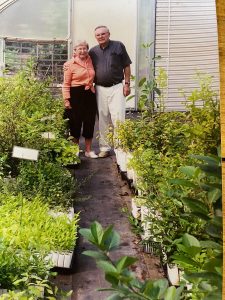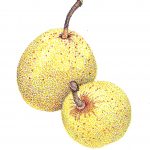Experience-Seeds-Knowledge-Plant Discoveries-Ecological Enrichment-Join Now Click Here!

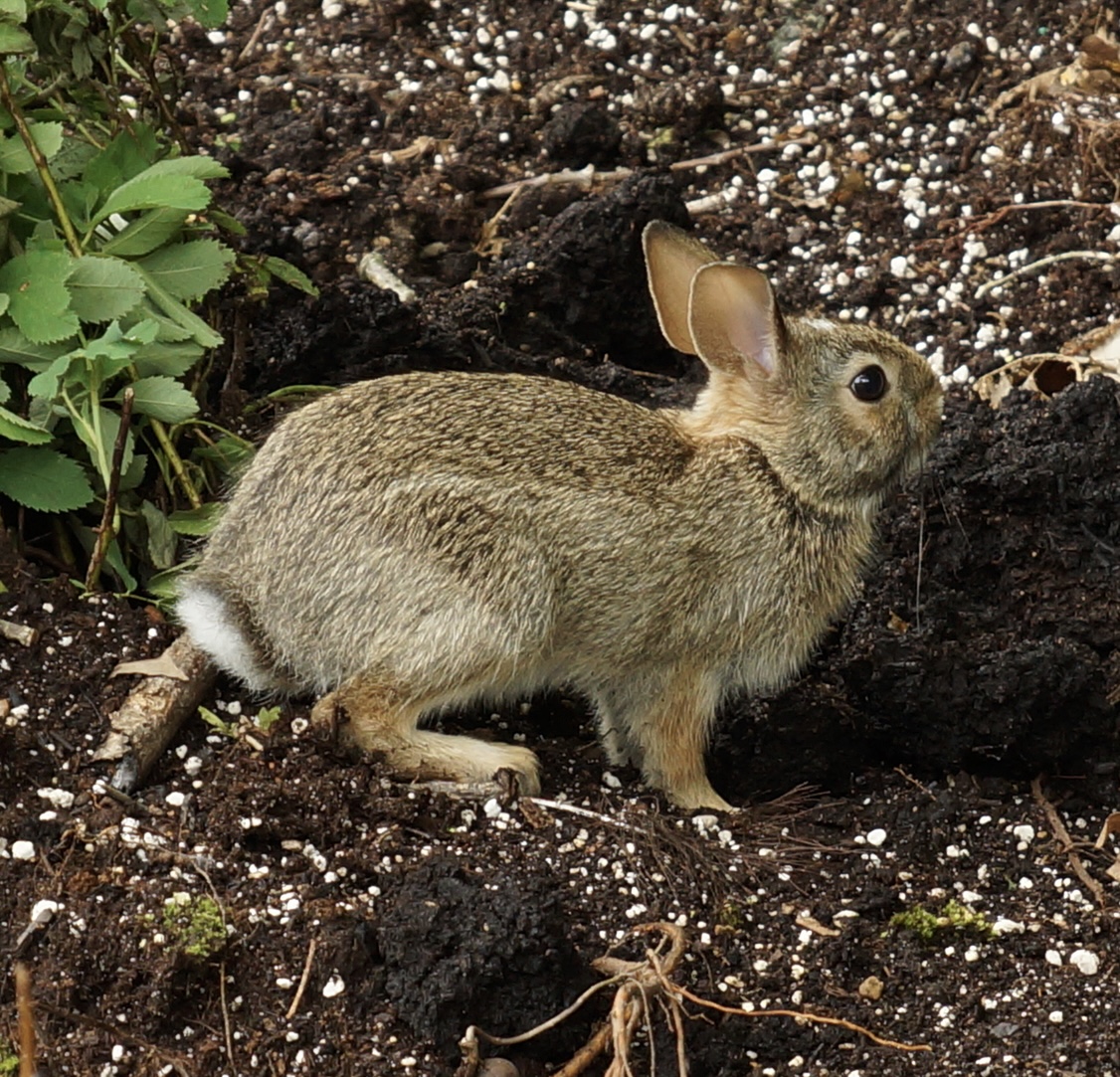
Finding Treasures in Nature
|
|---|
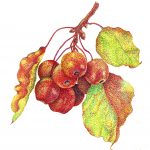
Can I dig a good hole? Yes. That is the start. Dig a good hole. Final step. Help others replicate my discoveries and dig a few more good holes. Where is the treasure? The trees and shrubs will feed us with healthy food. That is the discovery of the treasure of food created by the world’s flora. It is for everyone.
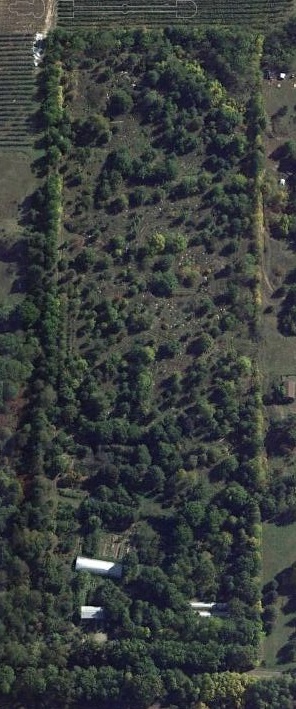
Early 2000’s google map shot of my farm.
Tools of Choice: At first my tool of choice was the Iowa D handled shovel manufactured by A.M. Leonard. Later I used various drain spades some with plastic composite handles. I had several Bulldog shovels when Smith and Hawken sold them. My favorite today is a shovel that has been in my family over 60 years. It is a true-temper Number 2. It is incredibly light with one of the best old growth ash handles with dense growth rings. The metal is very thin and strong. One thing all these shovels had in common was the sharp edge I would put on them prior to digging. This created a certain ease of cutting into the sod which greatly reduced friction.
A Brief History of Time: Creating Treasures
The vast majority of trees I planted in the ‘outback’ of 12 acres of so were done more or less as an after thought. This started in the early 1980’s. I was just married and had started a family. We were renting a house at that time. As seeds were germinated and trees produced at my farm I did have an intention to create a certain effect in some way and to test things in terms of the plants I was going to grow. There was no real plan to this but based instead on what I was getting for seed for the nursery. I was doing landscape designs including mowing and anything I could employ my services as a contractor prior to my farm. I started many types of designs for my field. It was difficult because I had no idea of the components of the designs and did not know what I would be planting. By components I mean plants using species and from seed hybrids. Eventually I abandoned that method and threw out the designs. It was done on a drafting table in an adjacent bedroom at my home. I found it was too separated from reality. As time went on and the nursery got busy, I had to sneak my plantings in within my work schedule. Often I would scurry out to the farm in the evening or on a Saturday and plant trees. This was more or less my recreational activity. It was a huge relief to me and hole digging became a rather blissful activity and not a chore in terms of manual labor. Every now I would think, maybe there is a bar of gold in this one. But the real treasure was the trees that I successfully transplanted and the joy it brought me and the positive change it brought to the environment at my farm. You could see and feel it. It was real. This gave me great comfort and over time fertilized my planting ideas. I was now thinking in terms of what can I add here as I walked through the farm. Eventually for lack of a better word, nature took care of this for me as new seedlings began emerging everywhere. This makes it so the tree farm is now planting itself you could say. I guess you could actually use and put meaning to the word regenerative.
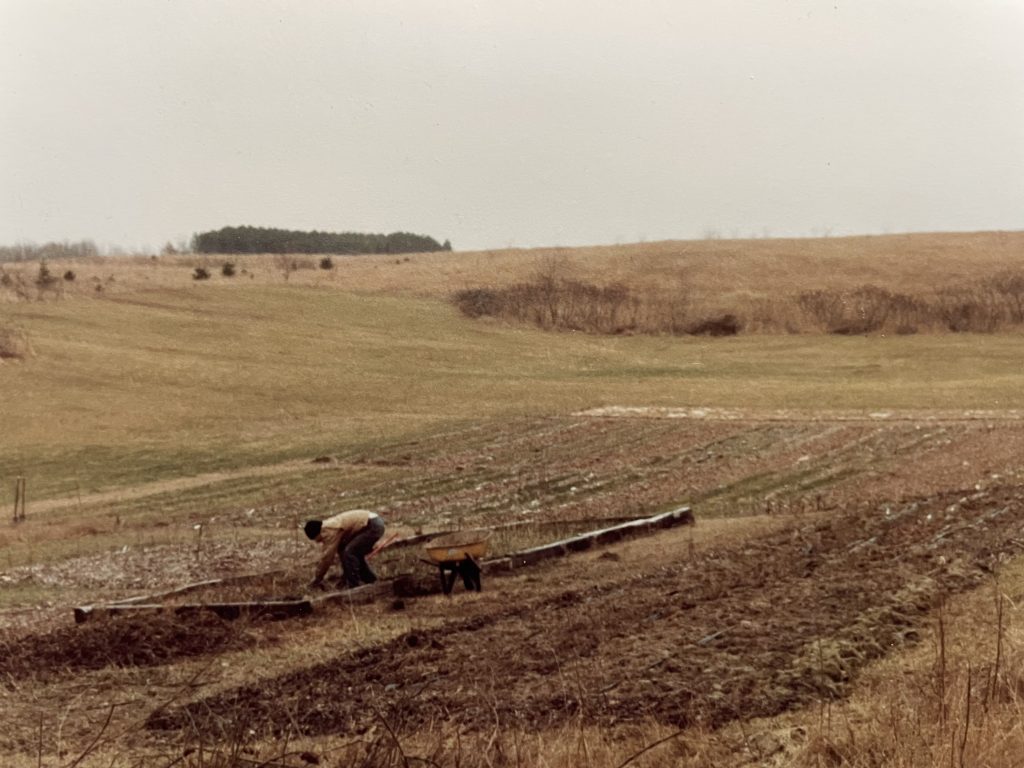
Today I am currently going over my index seminum and updating everything. At one point I passed a 1000 accessions. This is down as many plants perished over the years. Many perennials are gone. Recently I counted around 300 plants are gone according to the retrieved tags. Roughly another 200 were added since the last ‘go over’. The goal is not large numbers of genera or species. Instead it is actual fruiting and healthy plants that are vigorous and healthy. To this end most of the accessions contain many individuals for cross pollination purposes. A ‘normal’ arboretum uses wild seeds from non hybrid plants in the wild. My plantings were done based on plant health, vigor, disease and insect resistance, hardiness, short season and included hybrid and some wild collections including many from arboretum plantings. It was the opposite and not considered as useful in the botanical sense. A ‘normal’ fruit farm uses grafted trees of named varieties. Instead I used seedlings of mixed parentage some of questionable origin and unknown history if any. The whole thing is a mystery really. This is why highly educated and trained individuals of both the botanical world and the farming industry enter my farm somewhat confused. I try to help them out by feeding them pawpaws, pears and persimmons. This smooths out the bumps of understanding so to speak with a universal language; delicious fruit. That’s when the mind clicks and has that Eureka moment we all know.
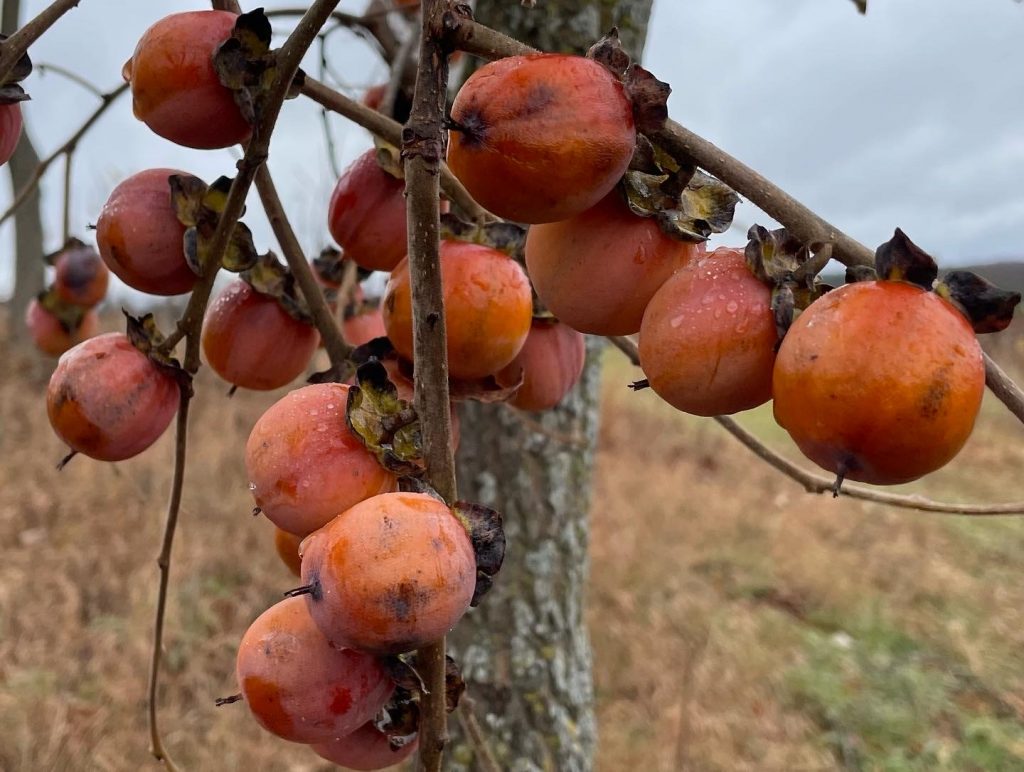
If you look at some of the magnificent plant collections people have in both the private and public world, normally these same individuals or organizations are very wealthy or at least have a means to support their foray into the botanical world on some level. The nursery world or better stated my nursery world did not supply this. My goal in the beginning was to purchase a larger farm like the one my family owned for Christmas trees which was 400 acres in size. This became impossible from the revenue from my nursery business and after a decade or so I quit looking knowing there would be no support as sales were too meager to create a larger Oikos Tree Crops farm let alone find land for sale in my area. At one point, I did try to find work or a second career outside of my industry as a means to finance my growing farming interests. That did not work but I did prune many an apple orchard in the winter throughout southwestern Michigan and met many wonderful apple growers. It appeared I was forever connected to some sort of farming.
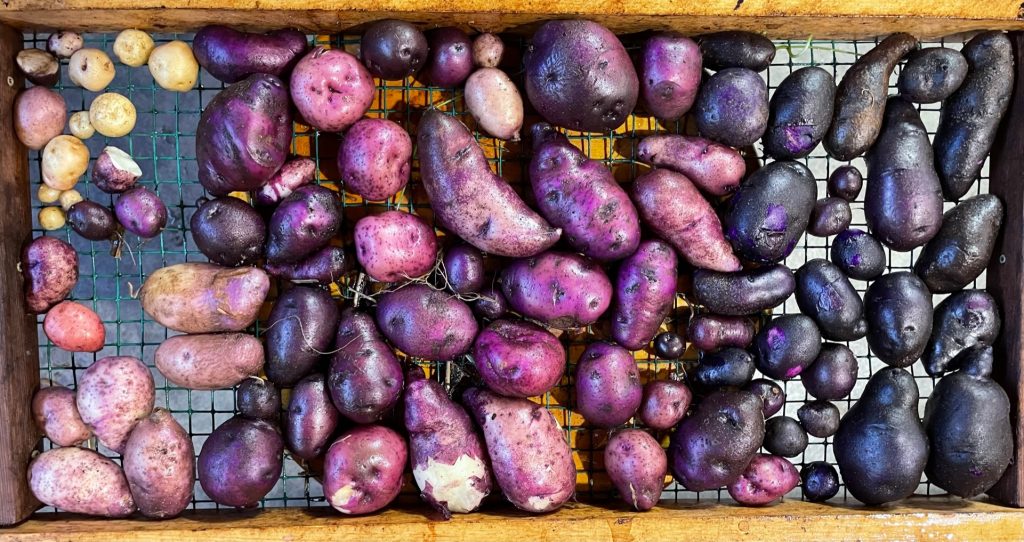
Being on your own and having a small manageable size has its advantages and there is a freedom from that. It is lucky because this is something anyone can replicate even with small amounts of money or resources. The issue today seems to be land acquisition and where to live if you wanted to start from scratch with a blank slate of a field like mine. I recently had a conversation with a land owner that is inheriting a property of 100 acres or more that is very high value in terms of real estate. To plant trees is not on the menu really but it sounded exciting to the family. Yet even the littlest amount is too much as the property taxes and home maintenance are quite high and the family is divided on what to do. It can be rented or diverted to some other use. There are options to do conservation type easements yet these often are very strict in terms of plant selections, etc. Since that is the only game in town so to speak, it is not possible someone could plant an apple orchard for instance. Apples are not conservation. My farm intentionally blurs the lines of what we think something should be in terms of land use. It is between conservation, native, exotic and fruit and nut farm. I believe it employs the best of all worlds.
It was rare, but sometimes I would have people help me in the ‘outback’ including my daughters, employees and interns. Usually these plantings were done as a means to generate seeds or unique plants that I was hoping to develop further in some way. I will say this with 100 percent accuracy. Everyone worked so hard and were committed to helping. This was refreshing. I had super good employees and amazing interns.
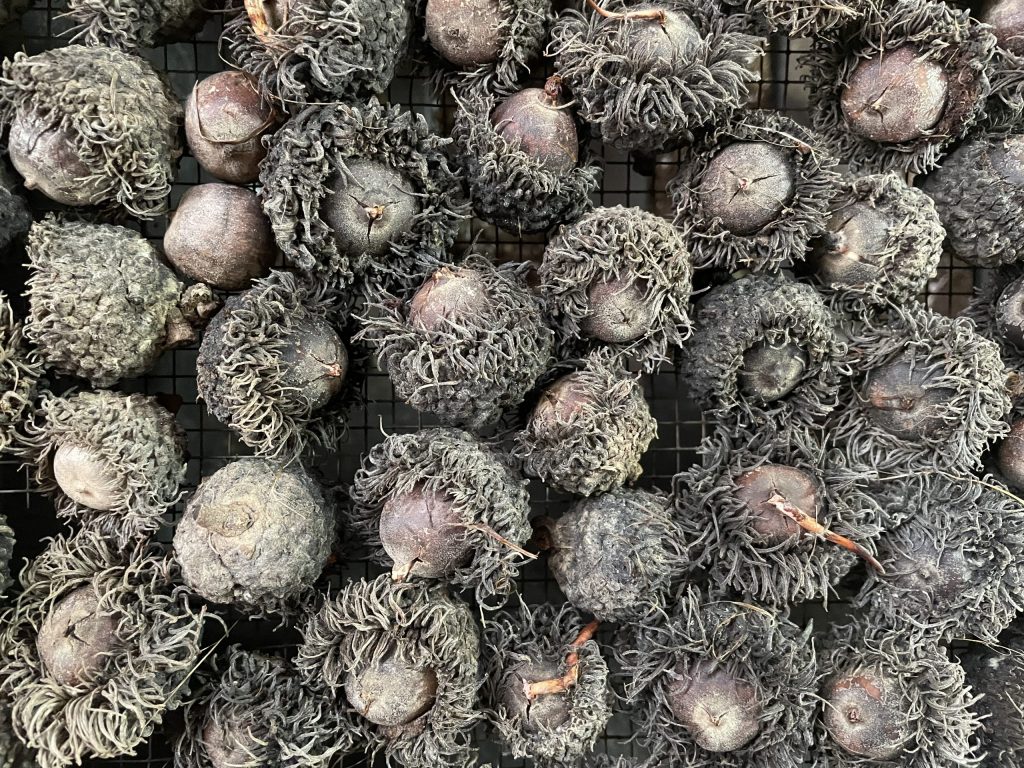
The ‘outback’ plantings were done away from the nursery and were usually done only when I could sneak out there with my shovel in tow with a bucket or wheelbarrow of mulch and a handful of plants of some sort. I use the word sneak as often people at my farm and family would go, ‘where did Ken go?’ during these times. It was my get away. There were many periods of time where I did not have this luxury of sneaking away. Like any calling, I would wonder what I was going to do next. In parallel ways, it was like writing, music,painting or any art form in that until it is completed you are never satisfied. There has to be a full story told. To that end, this article was written.
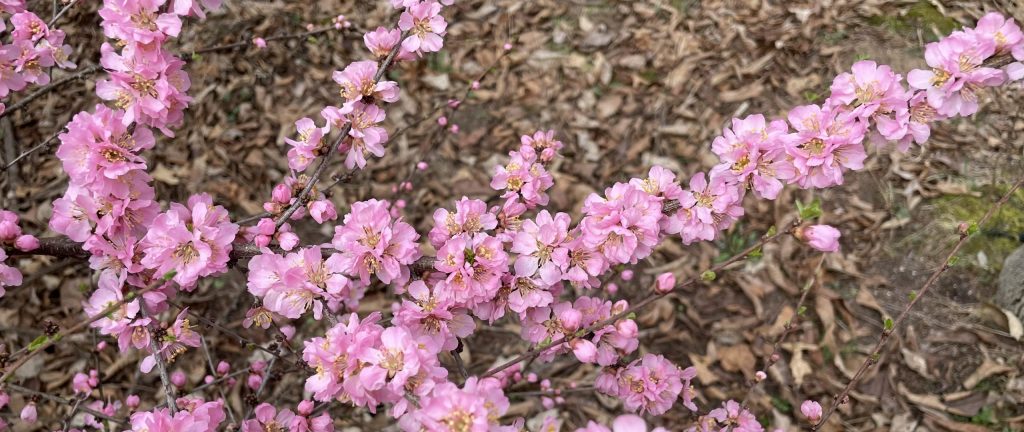
Above is a plant which I got from the late Clayton Berg, nursery person in Montana was Long Handled Almond, Prunus pendunculata. I planted several on a hillside. To date, I have found only one almond on all of the plants but I view that as a total success every spring as I am rewarded with these wonderful blossoms. The almond produced was a cherry sized hard-as-nails pit.
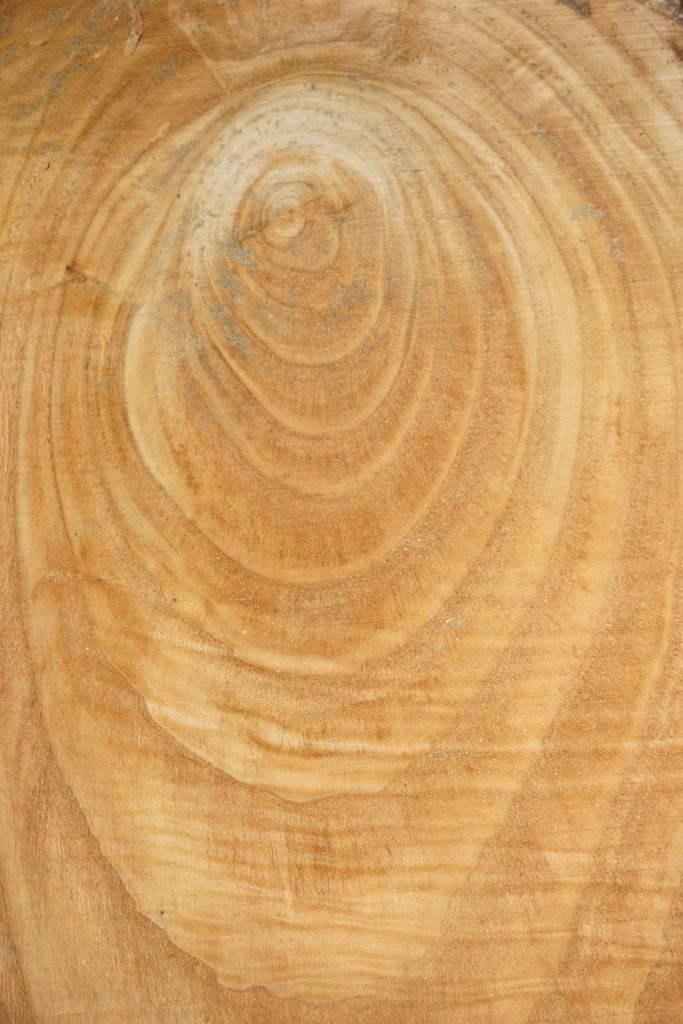
Harvesting wood from my farm seemed like a dream for me. Here it was at the end of a life for this chestnut tree only to be born again as furniture, bowls, shelves and tables. Chestnut wood is not really known as there are no sources for it other than old barns prior to the chestnut blight arriving. The question is now what am I going to do with it. I will have to think about that.
The Greatest Treasure of All
My parents were very supportive of my farm and helped me in many ways. This greenhouse was in part due to their generosity. Their spirit lives on within me as I constantly ask how can I help others in all avenues of life. I was so fortunate that they could see the results of my hard work and how my farm took shape. It was a true blessing to me to share with them what I could.
